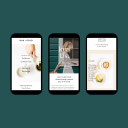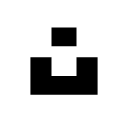My Independent Print Magazine Makes $114K
I’m Caroline Rowland, the founding editor of 91 Magazine. The magazine is a biannual print publication that focuses on creative interiors and lifestyle while championing small independent businesses. As well as the print magazine, we have an award-winning blog and a quarterly ezine that goes to our mailing list subscribers, inspiring throughout the year. We also host online workshops for creative business owners.
The magazine has grown from what was initially a free-to-read online publication to a print magazine that is stocked in independent stores around the world. Our readership varies as it depends on what our print run is on each issue, but it is usually 3000+ and the website receives over 27K page views a month. I was also shortlisted for Homes & Interiors Editor of the Year at the BSME (British Society of Magazine Editors) awards last year which was a huge honor. I found out last week that I have been shortlisted again this year which is wonderful news!


Download the report and join our email newsletter packed with business ideas and money-making opportunities, backed by real-life case studies.

Download the report and join our email newsletter packed with business ideas and money-making opportunities, backed by real-life case studies.

Download the report and join our email newsletter packed with business ideas and money-making opportunities, backed by real-life case studies.

Download the report and join our email newsletter packed with business ideas and money-making opportunities, backed by real-life case studies.

Download the report and join our email newsletter packed with business ideas and money-making opportunities, backed by real-life case studies.

Download the report and join our email newsletter packed with business ideas and money-making opportunities, backed by real-life case studies.

Download the report and join our email newsletter packed with business ideas and money-making opportunities, backed by real-life case studies.

Download the report and join our email newsletter packed with business ideas and money-making opportunities, backed by real-life case studies.





























